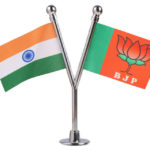The other day I was in a meeting with a CIO of a large healthcare company. She sounded exasparated by the pressure her team was facing from end users who seemed to know more about the latest devices available and the technology they were using as compared to some folks in her team. “My users are getting ahead of my team,” she said.
As if the incessant pressure on budgets, the inadequate supply of difficlut skills to execute projects, and the tight rope walk to manage different vendors was not enough, this new phenomenon of end users with high expectations was driving her crazy.
For decades, the CIO has been the master geek in the enterprise, holding the keys to secret chambers of technology, who decides what technology is used by business – both the senior and the junior folks. His writ was seldom challenged by users, because they didn’t know better and because they didn’t have a choice.
That has changed completely in last couple of years. The advent of mobility, the ipads, the reduction in bandwidth costs and reach of internet has ensured that the equation between technology at home and technology at work has changed irreversibly. A user has more choice of technology, sometimes gets better speeds, and lesser restrictions when he works from home as compared to the restricted environment he faces at work. The younger generation entering the work force is demanding the same level of flexibility and not settling for less. The lower ranks are rebelling against IT.
In addition to this, all the XaaS options available to business means they can meet their own needs by directly going to cloud bypassing the IT and the CIO. This has made IT vulnerable to the senior execs who control budgets and who now have altenative options to compare the IT costs and performance. The higher ranks which at best viewed IT with skepticisim, have more choice and are questioning IT more aggressively than before. When it comes to mobility and ipads, the senior executives and CXOs are joining the lower ranks in demanding IT deliver on all their expectations of flexibility and user choice.
In the fast moving goods market, the consumer who has hundreds of choices sets the agenda.
Enterprise IT which was in its cocoon so far, now has to deal with the consumer who has entered the skin of the end user, and turned him into a demanding “en”sumer who is getting to set a difficult agenda for the enterprises IT teams to follow.
What exactly is the user demanding, and how is IT reacting to this dynamic agenda of the “en”sumer?










